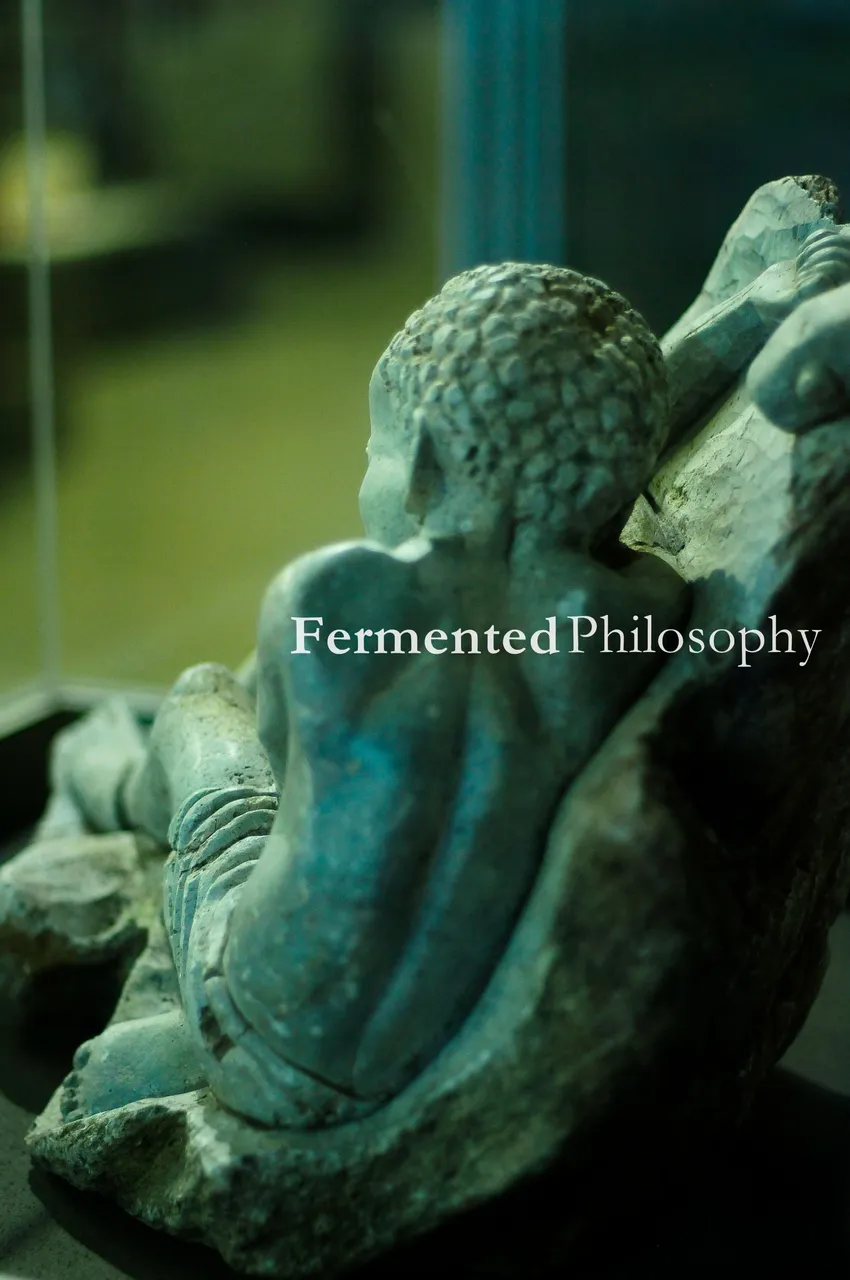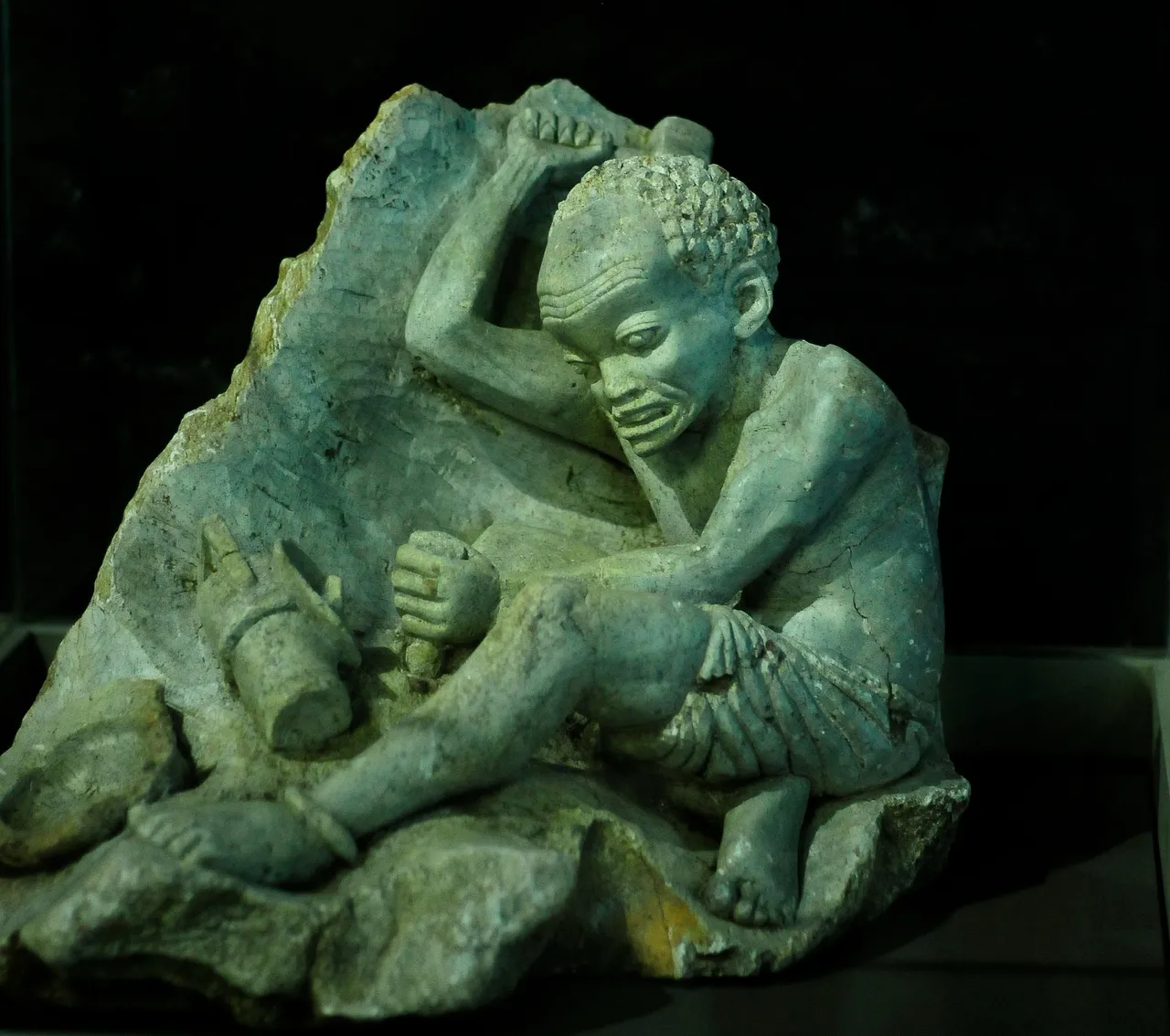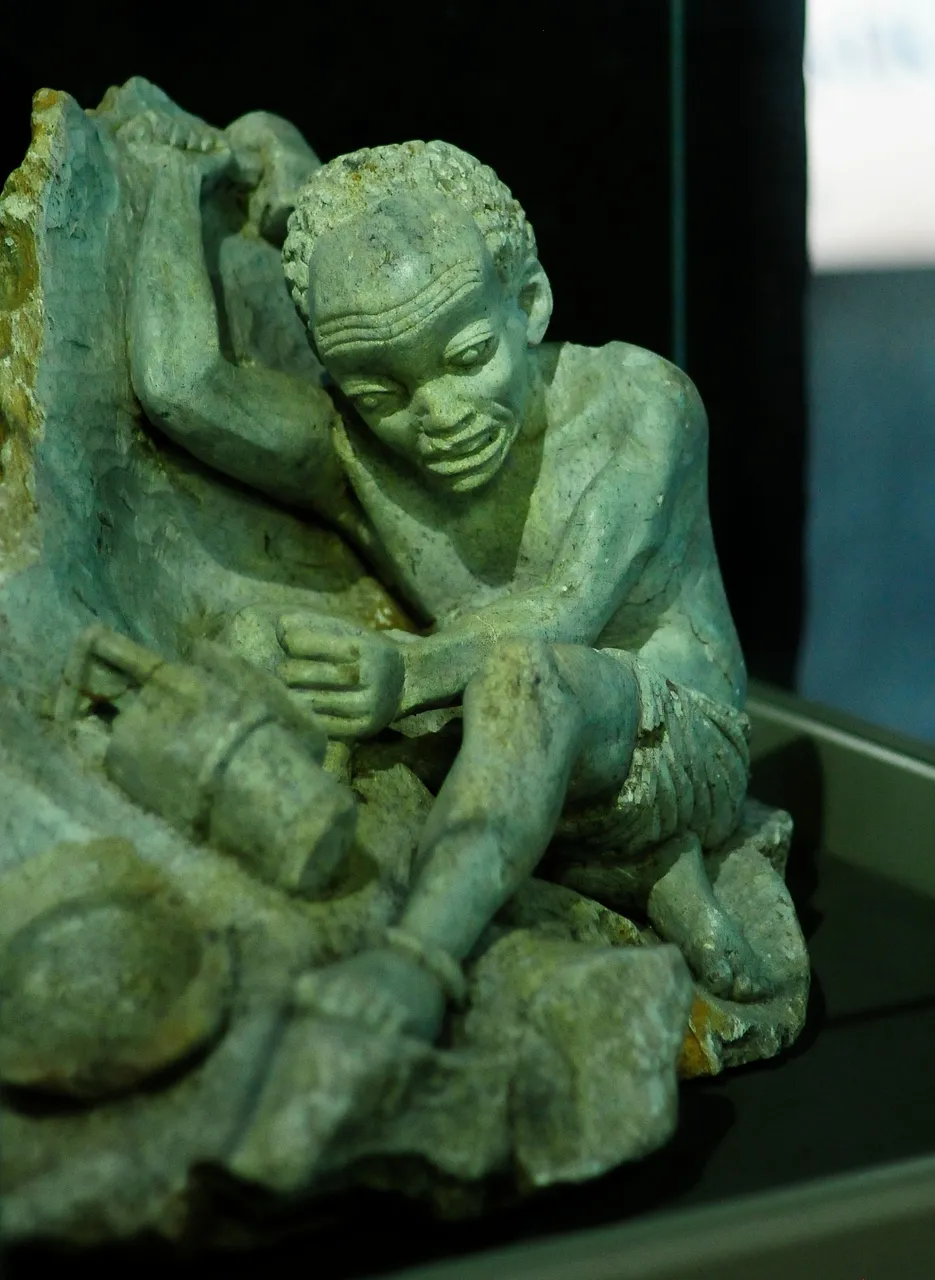
Serequeberhan writes in his 1994 book The hermeneutics of African Philosophy that
philosophy has the peculiar characteristic of always being implicated in its own conceptions and formulations.
Derrida, in his turn, writes that 'Il n'y a pas de hors-texte' [There is no outside-text]. He also wrote that
All philosophical discussions carry within them the question: What is philosophy? Where does it begin, where does it end? What is the limit?
Samson Makwala's 1990 sculpture beautifully captures this paradoxical moment as one tries to escape the text, or escape one's own writing. Take a look at the photograph below. The stone mason is trying to free himself from the very thing it is made of. It cannot escape itself, it cannot escape what he is making. He is perpetually stuck in the very thing he is trying to escape. The stone mason cannot free himself.

So also, the philosopher can never escape her own world, her own assumptions. In fact, these assumptions and world lead directly to her philosophy and her writing. By trying to distance herself from them, she ends up like the stone mason, being fixed in the very material he is making. It is a wholly paradoxical and sometimes worrying thought. Does it lead to a crude form of determinism? I am merely my assumptions but as Martin Heidegger said, I am thrown into a world not of my making. So how much can I really change these assumptions? In other words, how much can I change the substance of the stone mason's attempt to free itself?

Derrida continues by stating that all philosophical discussions will contain the question of what its limits are and what it essentially is. Again, by trying to free itself, the mason is perpetually eaten by the stone substance. It tries to get outside of itself. The implication for philosophy in this regard is that it can never escape the fate that its own practice will have a multitude of understandings and interpretations. It is again like the stone mason trying to escape the stone structure it is embedded in. It might also bring to mind the Escher sketch of the hand drawing the hand.
Again, the implication is a strange and paradoxical determinism that one cannot escape. Take for example the famous cave metaphor/allegory of Plato. The prisoners attempt to escape the cave in search of the true forms, akin to the stone mason trying to carve itself out of the rock, or the philosopher trying to get away from her assumptions. But is this even at all possible? Should we not try to explore Plato's cave, should we not remind ourselves that we will never escape the stone we are stuck in, and the philosopher should revel in the newfound freedom she finds in being implicated in her own writings?
I look at the statue of Makwala and I see the philosopher tirelessly working on grand theories, but unbeknownst to her, she is stuck in her own work, she is stuck in her own text, a world of her own making. One she can never escape. Her previous work, her reading of others, everything is a chain that produces the next text. She is stuck, like the stone mason figure in Makwala's artwork. The more she tries to free herself, the deeper she recedes into the stone. Perpetually captured and seized by her own projects.
What a funny thought.
Postscriptum, or Escaping Makwala's Statue
This is yet another idea I am working on, one I would like to take further in my own writings. How I will do this is still a mystery, but I can already see how the Makwala statue will play an important role in it.
For now, I hope you enjoyed this for now philosophical nugget that might turn into something more substantial in the future.
Happy reading, and stay safe.
The photographs used in this post are my own, however, the work depicted is Makwala's artwork. The musings, unless stated otherwise or hyperlinked, are my own, albeit inspired by the sculpture and the quotes mentioned at the start of the post.